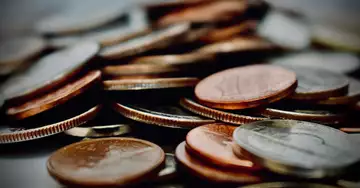As the cryptocurrency industry takes stock of the dramatic unraveling of the UST project, those who develop and maintain stablecoins are at pains to point out that these instruments are not the same.
That message bears repeating, says Dante Disparte, chief strategy officer and head of global policy at Circle, creator of the USDC stablecoin, because it's not obvious to people outside the cryptocurrency industry - and that could include regulators and policymakers, whose attention will now turn to this area.
"I think there is a discussion about demarcation; that the term of art 'stablecoin' has probably had its day," Disparate said in an interview, adding:
"It warrants a discussion about whether algorithmic stablecoins even belong in the class of instruments that are subject to existing regulations. Do they belong in the realm that affects real consumers and real payments?"
Circle's USDC, which counts BNY Mellon as a custodian and recently received an investment from BlackRock, currently has $49 billion in circulation, according to CoinMarketCap.
Tether, the largest asset-backed stablecoin with a market cap of $79.3 billion at the time of writing, generally held its course over the course of this week and confirmed Thursday that it continues to allow redemptions.
Paolo Ardoino, chief technology officer of Tether, spoke about the Terra debacle during a Twitter Spaces discussion and echoed Dispartes' call for a clearer classification of stablecoins.
"We would like to see a categorization of stablecoins, where of course there are the centralized stablecoins, and Tether is the largest, and there are algorithmic stablecoins," Ardoino said. "I think it's really important for customer protection to have some sort of guidelines."
While regulators have paid a lot of attention to asset-backed stablecoins like USDC so far, Disparate said algorithmic stablecoins have been a bureaucratic "blind spot."
"They're the ones that are blowing up, and that's why I think it's an association problem," Disparate said. "It's a 'stable-in-name-only' problem. But the risk that has manifested itself is exactly why policy discussion on these types of issues is so important.
It is generally believed that there are three types of stablecoin: fiat-backed (USDT, USDC), crypto-backed (DAI, sUSD), and algorithmic (UST, IRON).
Despite the vagueness of the classifications, some lawmakers are rising up and making distinctions, like Republican Senator Pat Toomey earlier this week when UST found its way into a congressional testimony.
Stability spectrum
When considering algorithmic stablecoins, there is a spectrum within the category, said Fernando Martinelli, CEO of Balancer Labs, an automated market maker (AMM) in the decentralized finance (DeFi) space.
"There has always been a question mark in this third category of algorithmic stablecoins," Martinelli said. "You can't tell if an algorithmic stablecoin has no substance or is not well designed. There are some algorithmic stablecoins that are highly collateralized, but not overly collateralized."
Since Terra blew up, DAI, the five-year-old over-collateralized stablecoin overseen by the MakerDAO community, has held its peg and conducted orderly collateral liquidations overnight, which "was a great test for the system," said Luca Prosperi, a credit oversight leader at MakerDAO.
MakerDAO's DAI is stable because it is conversational and everything is overcollateralized, Prosperi said. The current collateral ratio is 175.59%, meaning that each DAI is backed by $1.7558 worth of collateral; in particular, USDC stablecoin currently accounts for 41% of the collateral used to mint DAIs, according to on-chain data compiled by Dai Stats.
Maker's automatic liquidation mechanism is starting to liquidate collateral to protect itself, and has shrunk accordingly, with a market cap of $6.4 billion today.
"Maker has done exactly what it was supposed to do," Prosperi said in an interview, adding:
"It has shrunk because the economy is shrinking and the currency base is shrinking. The system was stable because it was built very conservatively, and that took a lot of effort from the core team members because the community is very impatient. As Terra grew, many people accused us of being too conservative. But we are running a currency."
Regarding the terminology raised by Circle and the role it will play in the eyes of regulators, Prosperi said the "stablecoin" designation is a great marketing tool. However, he cautioned against simply re-categorizing it, saying there is a "continuum."
At one end of the spectrum is USDC, "a simple vanilla coin that is very secure and not very innovative, but a great bridge," Prosperi said. At the other extreme is UST, and DAI is somewhere in the middle, he said.
"I think we're going to see more and more diversification of that term into sub-concepts that much better reflect what the individual use cases are for each of these projects, and I suspect some of the best projects will work together," Prosperi said. "I think USDC can be a great security for makers who can create conservative leverage through DAI."
Regarding regulatory scrutiny of algorithmic stablecoins following the demise of UST, Prosperi said MakerDAO is a "strange animal" because it is a decentralized community rather than a legal entity, as well as a permissionless protocol that cannot be shut down.
"I think there will certainly be some pressure from regulators. But I think Maker is probably not in the forefront," he said. "I think USDT, USDC, those ramps are the front line and other services that allow liquidity to be put on the chain will be scrutinized."

